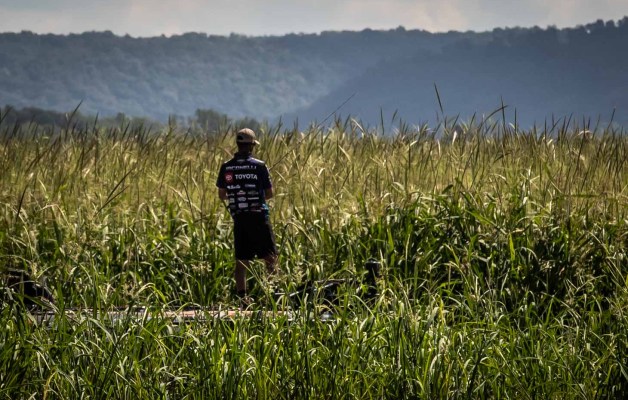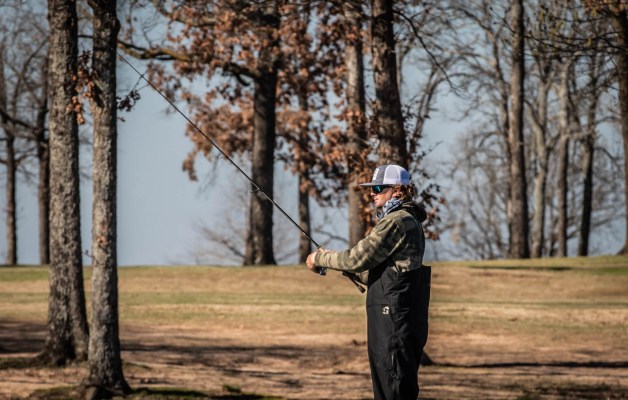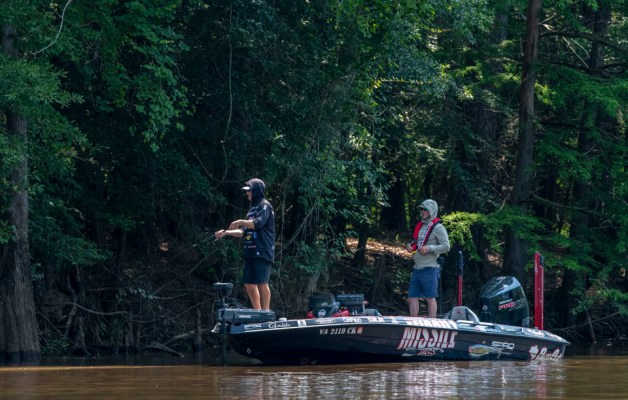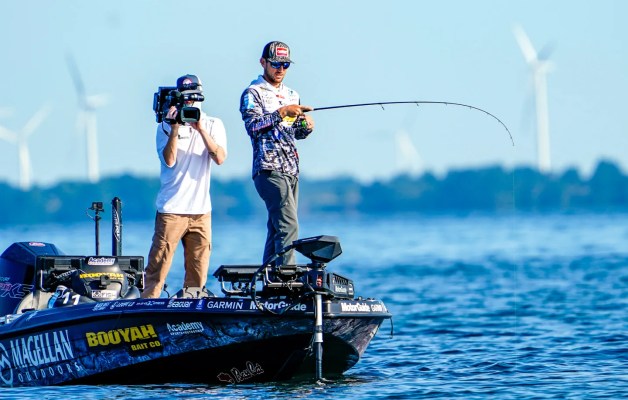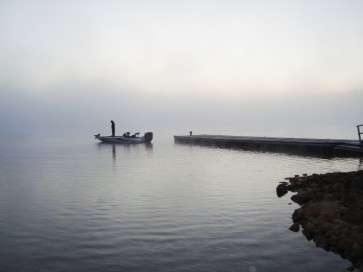
It has been more than 10 years since Bassmaster Elite Series standout Aaron Martens migrated from California to Alabama. The move shortened his driving time to most of the Elite Series tournaments and gave Martens ready access to Sweet Home’s premier bass reservoirs.
One of those reservoirs is Lewis Smith Lake, which lies an hour north of Birmingham just off I-65. Given Smith Lake’s clear, deep water and rocky bass habitat, it has similarities to some of the California lakes that taught Martens how to fish.
“Smith is a great lake for pattern fishing,” Martens points out. “It has over 500 miles of shoreline and lots of creeks and coves.”
This 21,200-acre reservoir is known for its strong spotted bass population. On March 18, 1978, Phillip C. Terry of Decatur caught the 8-pound, 15-ounce Alabama state record spotted bass here.
March continues to be an excellent month for catching chunky spotted bass at Smith Lake. But, don’t overlook the largemouths. An electrofishing survey done by Alabama’s Wildlife and Freshwater Fisheries Division in April of 2007 captured just as many largemouth as spots.
Thanks to a 13-15 inch slot limit, 16% of the bass in the 2007 survey exceeded 15 inches. That was an improvement from a survey done in 2003. Martens noticed an upgrade when he fished a Bass Pro Shops Bassmaster Southern Open at Smith Lake in October 2012.
Baitfish
 “There were tons of baitfish everywhere I went,” Martens says. “I’d never seen it like that.”
“There were tons of baitfish everywhere I went,” Martens says. “I’d never seen it like that.”
While practicing for the tournament, Martens accidentally dropped a bass on his boat’s deck, causing it to spit up a blueback herring.
“I didn’t know bluebacks were in Smith Lake until that moment,” he said. “That’s probably why the bass I was catching were so fat and healthy.”
One downside with bluebacks is that bass tend to suspend when they feed on them. This can make fishing more challenging because the bass don’t relate as well to bottom structure.
However, you don’t need to concern yourself with that in March, Martens claims. March is when Smith’s bass are predictable due to prespawn feeding and staging activities.
Prespawn Spotted Bass Patterns
Smith’s spotted bass typically stage and spawn close to the main lake, Martens has found. Key staging areas in March are bluff ends and points at the mouths of creeks.
“The lake also has a lot of narrows where the spots can spawn right off the main river channel,” Martens says.
Depending on the water conditions and how close the bass are to spawning, they could be from 3 to 14 feet deep. Since Martens typically fishes with a dozen or more rods on his boat’s deck, he temps bites with a variety of lures.
“If there’s a good wind, I’ll get after them with a jerkbait and a medium running crankbait,” Martens says.
He favors a Megabass Vision 110 jerkbait in a shad pattern, and the Megabass MR-X Cyclone crankbait in a shad or crawdad color.
Other rods on Martens’ deck would be rigged with a soft jerkbait, a ball head jig dressed with a small crawdad, and a 1/4-ounce homemade finesse jig tipped with a small chunk.
“A shaky head worm and a drop shot works well at Smith, too, but you’ll catch bigger bass at that time of year with a finesse jig,” Martens says.
Martens targets “crawdad rock,” which includes chunk rock and baseball to softball size rocks. He also casts under the walkways leading to docks.
Prespawn Largemouth Patterns
 For prespawn largemouths, Martens suggests that you hit points, bluffs and 45-degree sloping banks in the back of the larger creeks. Sun-baked banks shielded from north winds are the most productive.
For prespawn largemouths, Martens suggests that you hit points, bluffs and 45-degree sloping banks in the back of the larger creeks. Sun-baked banks shielded from north winds are the most productive.
“Channel swing banks that lead into a spawning pocket are where you’ll catch the big females,” Martens adds.
Crawdad rocks are also a key to catching prespawn largemouths at Smith Lake, Martens points out. The same lures that coax bites from spotted bass work on the largemouths. The wind, or lack of it, determines whether Martens opts for jerkbaits and crankbaits or bottom lures such as the shaky head worm, drop shot or jig.
“You can’t sit in one place and load up on the spotted bass or the largemouths at Smith Lake,” Martens points out. “After you figure out a pattern, stay on the move and pick the bass off one or two at a time.”
KEEP THE UNDERS
Smith Lake’s slot limit of 13-15 inches is bringing about larger bass. In order for the slot limit to work its magic, the Alabama Division of Wildlife and Freshwater Fisheries Division urges fishermen to keep any bass they catch less than 13 inches in length. The remaining bass grow bigger because there is less competition for a finite forage base.
BIG STRIPERS
Striped bass weighing over 40 pounds swim in Smith Lake. The preferred bait here is live shad. It is illegal to possess blueback herring in Alabama, so don’t use them for bait. Smith Lake’s stripers grow about 2 pounds per year, which means a 20-pound fish is 10 years old. Put Ryan Creek on your hit list. The stripers grow fatter there.
HABITAT GPS COORDINATES
Not only has the Alabama Power Company improved the fishing at Smith Lake by providing habitat, they’ll give you GPS coordinates to these sweet spots. Get the coordinates here: alabamapower.com/lakes/fishdata.asp.
GO HERE FIRST
Before you visit Smith Lake or any Alabama reservoir, go to alabamabasstrail.org. Here you’ll find detailed information about nine lakes and two major river systems, including fishing locations, productive fishing patterns, local guides, campgrounds and where to stay.
For more information, visit AlabamaBassTrail.org.


